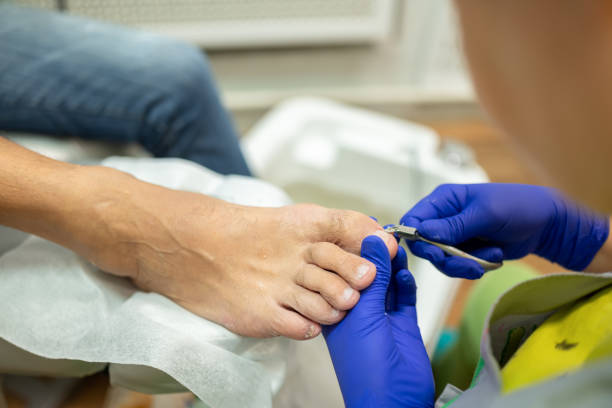The Centers for Advanced Orthopaedics is redefining the way musculoskeletal care is delivered across the region with locations throughout Maryland, DC, Virginia and Pennsylvania.
Foot Care Practices That Help Prevent Ingrown Toenails

Ingrown toenails are a common and often painful condition that occurs when the edge of a toenail grows into the surrounding skin. While they can affect anyone, certain habits and foot care routines can make a significant difference in prevention.
Overview of Ingrown Toenails
An ingrown toenail mostly develops on the big toe, though any nail can be affected. It usually begins with mild tenderness or irritation along the nail edge and can progress to redness, swelling, or infection if not addressed early. Common contributing factors include improper nail trimming, tight or ill-fitting footwear, and repetitive pressure on the toes from athletic activity or prolonged standing.
Proper Nail Trimming Techniques
Appropriate nail care remains one of the most effective ways to prevent ingrown toenails. Toenails should be trimmed straight across rather than curved at the edges. Cutting too short or rounding the corners can encourage the nail to grow into the surrounding skin. Using clean, sharp nail clippers and trimming nails after bathing, when they are softer, can promote a clean and even cut.
Selecting Appropriate Footwear
Footwear plays an important role in prevention. Shoes that are too tight or narrow can push the toes together and create pressure along the nail borders. Over time, this can cause the nail to curve inward. Selecting properly fitted shoes with adequate toe space reduces friction and helps maintain natural nail alignment. For individuals who wear closed-toe shoes throughout the day, breathable materials are recommended to minimize moisture buildup.
Maintaining Foot Hygiene
Keeping the feet clean and dry is essential for overall nail health. Moisture softens the skin and nails, making them more susceptible to irritation or infection. Washing the feet daily, drying them thoroughly, especially between the toes, and wearing moisture-wicking socks can help protect against these issues.
Addressing Underlying Foot Conditions
Certain foot conditions can increase the likelihood of developing ingrown toenails. Fungal infections, nail trauma, or structural deformities should be addressed early to preserve healthy nail growth. Individuals with diabetes or circulation problems should monitor their feet closely and seek professional care if they notice pain, swelling, or signs of infection.
Promoting Long-Term Foot Health
Preventing ingrown toenails begins with consistent care and attention to detail. Correct nail trimming, appropriate footwear, and good hygiene practices are the foundation of prevention. Maintaining these habits supports long-term foot comfort and reduces the risk of recurring nail problems.